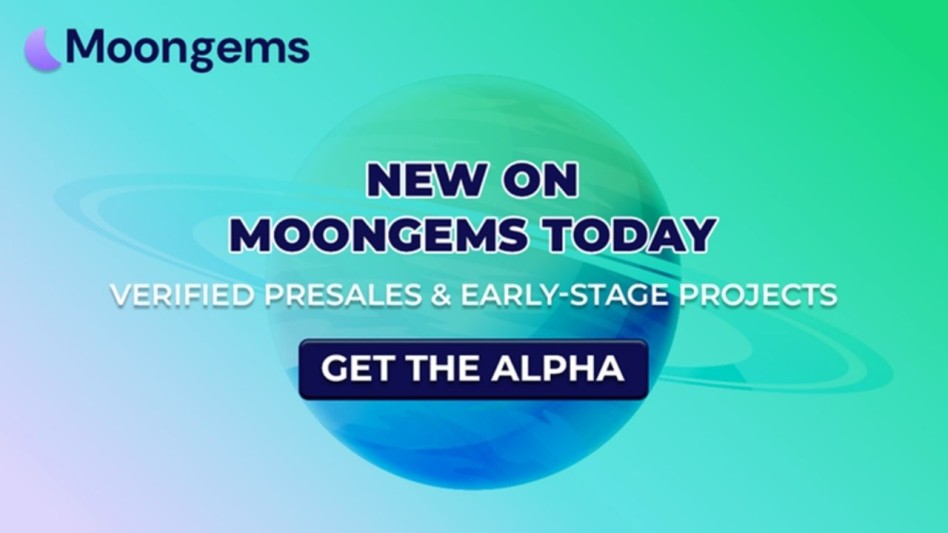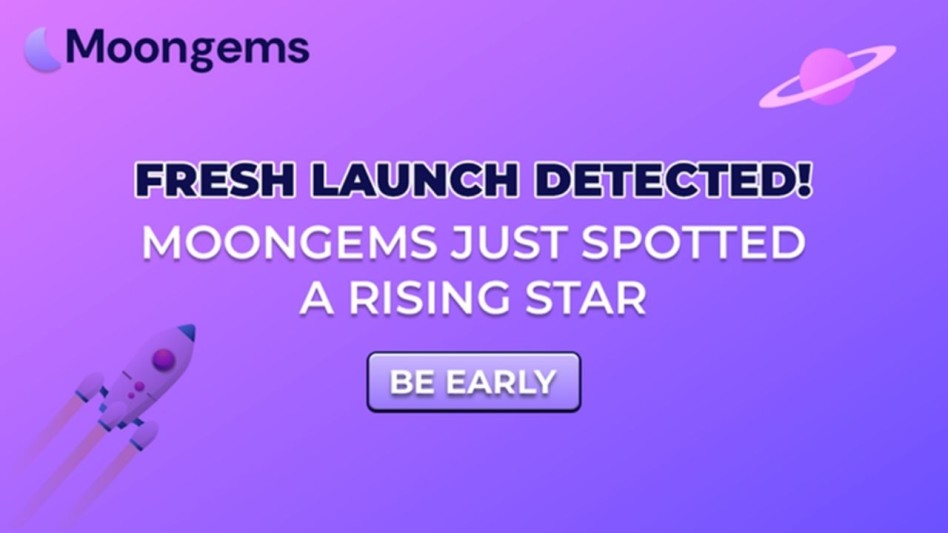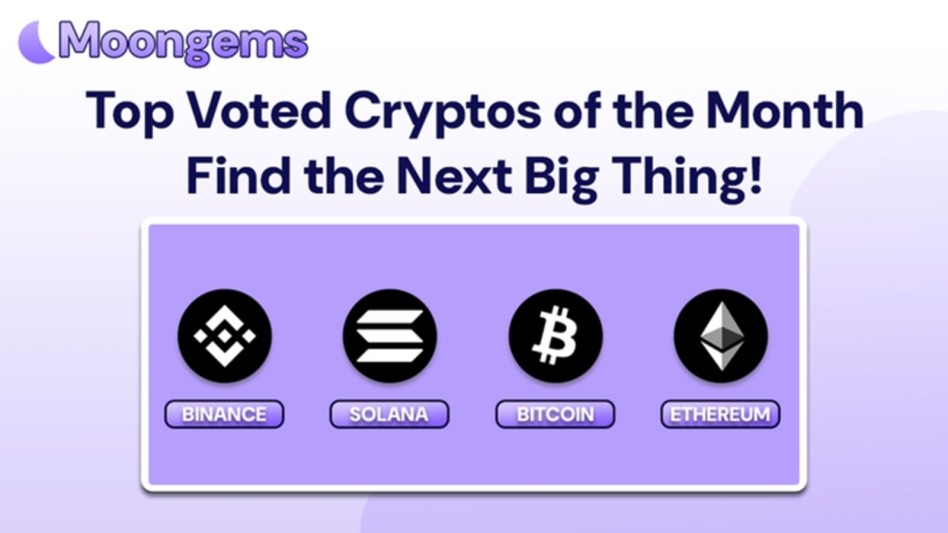Author: Jawad Hussain – Crypto Analyst & Web3 Researcher | 9+ years tracking presales, IDOs, and token launches. Follow him on Twitter and LinkedIn.
In 2025’s presale landscape, a new dilemma is catching serious heat: Should you stake tokens during the presale period, or wait for listing before locking your bags? As more early-stage crypto projects gamify token holding with high-APY staking pools before launch, the stakes—pun intended—have never been higher.
The pitch is attractive: lock up your tokens early, earn while you wait, and walk away with a bigger stack once the coin hits the exchange. But here’s the hard truth: staking before price discovery introduces a cocktail of volatility, lockup uncertainty, and sometimes even inflated APY promises designed more for FOMO than sustainability.
This MoonGems guide breaks down the truth about staking during crypto presales. We’ll dissect how staking offers work, when they make financial sense, how to spot the red flags, and whether the provided APY is even remotely achievable long-term. The goal? Help you avoid getting wrecked by early staking traps and understand how to make smarter, more data-driven decisions with your capital.
1. How Presale Staking Actually Works
Presale staking occurs when a project allows early buyers to lock their tokens in a smart contract before the token is officially listed on exchanges. This lock period is often accompanied by a reward model—commonly paid out in the same token—calculated through Annual Percentage Yield (APY) or fixed interest.
This staking mechanism is often promoted to reduce sell pressure at launch, reward early adopters, and signal confidence from the team. In most cases, your staked tokens remain locked for a fixed duration (30–365 days), or until a specific unlock event such as listing, vesting checkpoint, or liquidity launch.
However, since the token is not yet listed, its real-time market value is undefined. You’re staking in a vacuum, hoping the post-listing price aligns with your projected ROI, and that the staking reward doesn’t inflate supply too quickly.
2. The Potential Upside: High Returns for High Conviction
For well-researched projects with long-term vision and strong fundamentals, presale staking can be a smart way to multiply your holdings without additional investment. Let’s say you join a presale at $0.005 and stake your allocation for 90 days at 60% APY (pro-rated). When the token lists at $0.01, you’re already up 100%—and your staked tokens just added an extra 15%.
Your staking yield can translate into meaningful value if the token has deflationary mechanics, a low initial market cap, and steady CEX listings post-launch. Staking also benefits the project by reducing early sell-offs and encouraging long-term holding behavior.
Some high-performing projects even offer dual rewards (e.g., tokens + NFTs, or tokens + governance points), further enhancing ROI without trading.
3. The Downside: Lockups, Exit Risk, and Illiquid APY
The biggest risk with presale staking is liquidity entrapment. Once you stake, you're usually locked out of any sell decision until the period ends—even if the market turns or the project loses traction. And because the token isn’t tradable yet, you can’t hedge or exit.
Another red flag? Unsustainable APY. Many presales lure investors with outrageous rates—300% APY or higher—that are mathematically impossible to sustain. These often rely on minting more tokens, inflating the supply and increasing the price at launch.
Also, beware of projects that only highlight staking without discussing their use case, roadmap, or listings. If staking is the main value prop, the project might be a yield ponzi hiding behind early incentives.
4. How to Calculate Realistic Staking ROI
To assess if presale staking is worth it, calculate the effective staking yield using the following formula:
Staking ROI = (APY ÷ 365) × Lockup Days × Expected Listing Price
Let’s say:
- You invest $1,000 worth of tokens at $0.005
- Staking offers 60% APY
- Lockup is 90 days
- Projected listing price is $0.01
You’d earn about 14.79% more tokens, and if the token lists at $0.01, your total asset value becomes $1,148. That’s a decent upside—but only if the price projection holds. If it crashes to $0.003, your effective ROI drops to 44% of your initial capital.
MoonGems Tip: Always test worst-case and best-case listing price scenarios before locking tokens.
5. Red Flags in Presale Staking Offers
Some staking programs are sugar-coated rug pulls. Here’s what to look out for:
- No published smart contract for the staking pool
- No vesting structure for staking rewards (leading to sudden dumps)
- No roadmap or launch timeline, but staking is live
- Fake APY calculators with no backend math
- Ambiguous lockup periods or “dynamic unlocks”
If staking seems to be the only product being promoted, that’s a major signal to step back.
6. When It’s Better to Wait Until After Launch
For many investors, the post-launch staking route is smarter. Why?
- You get price clarity.
- You can buy the dip instead of being locked in.
- The staking program may offer better terms after the initial hype cools.
MoonGems analysts suggest avoiding presale staking unless:
- The tokenomics are already public and balanced.
- The staking contract is audited.
- The APY is under 100% and paid from an actual rewards pool, not mint inflation.
- You’re prepared to lose access to your funds for the full lockup period.
7. How MoonGems Ranks Presale Staking Programs
MoonGems applies a 5-point scoring system when reviewing presale staking:
- Transparency – Is the staking contract published and audited?
- APY Logic – Is the APY sustainable based on supply/demand?
- Lockup Fairness – Are terms and exit rules clearly defined?
- Reward Source – Where are staking rewards coming from?
- Launch Plan – Is there a real roadmap beyond just staking?
If a project scores below 3 out of 5, it’s tagged high-risk in MoonGems research.
Conclusion
Staking during a presale can supercharge your crypto portfolio—or become a one-way ticket to regret. While the promise of high APY and early rewards is tempting, the reality is more nuanced. Lockups, price volatility, and inflationary reward systems can destroy ROI if you’re not vigilant.
MoonGems recommends that only experienced investors—or those with full confidence in a project’s fundamentals—consider presale staking. For everyone else, waiting until after launch to stake may be the wiser move.
The key here is clarity. Know what you’re staking, how long you’re locked in, what you’re earning, and whether that APY is real or just bait.
Frequently Asked Questions
- What is presale staking?
It’s when you lock your tokens in a smart contract during the presale phase to earn rewards. - Is presale staking safe?
Only if the contract is audited, terms are clear, and APY is sustainable. - How do I calculate staking returns?
Use the formula: (APY ÷ 365) × Lockup Days × Projected Token Price. - What happens if the token dumps after launch?
Your staking rewards may become worthless, even if the APY looks high. - Can I unstake early?
Most presale staking programs have fixed lockups with no early withdrawal. - What’s a healthy APY range for presales?
25%–80% annualised APY is more realistic than 500%+ offers. - Is it better to stake after launch?
Yes, if you prefer liquidity, clearer pricing, and more control.
Glossary of Key Terms
- Presale Staking: Locking tokens before launch to earn APY rewards.
- APY: Annual Percentage Yield—how much you earn on staked tokens annually.
- Lockup Period: Duration which tokens are inaccessible during staking.
- Smart Contract: Self-executing code used to manage staking rules.
- Inflationary Rewards: Token rewards created by minting more supply.
- Effective ROI: Actual return after accounting for price and time.
- Audit: Security review of the smart contract by third-party experts.
- Minting: Creating new tokens can lead to inflation.
- Liquidity Trap: When staked tokens are stuck while the price crashes.
- MoonGems Score: A proprietary 5-point presale project rating system.
Disclaimer
This content is for educational purposes only and does not constitute investment advice. Cryptocurrency staking and presale participation carry inherent risks, including total capital loss. Always conduct your own research (DYOR) and consult a licensed advisor before making financial decisions.












